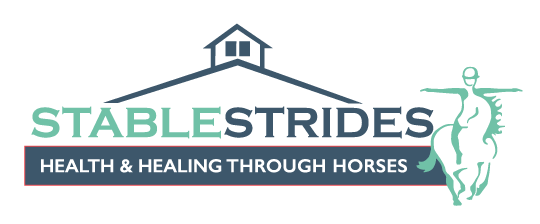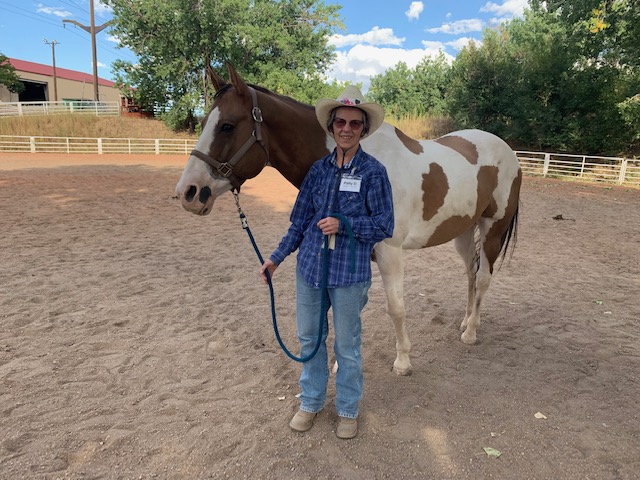By Chester DeAngelis, Program Director
“One of the greatest parts of working in a treatment team, rather than solo, is the support that your co-facilitator provides. You are able to collaborate on client goals and how those goals pair with horsemanship activities, discuss inconsistencies, patterns or uniqueness’s that you observe in sessions, and have a more well-rounded view of the client’s strengths, progress and growth opportunities throughout their treatment. As a Licensed Clinician, I am aware of the secondary stress or vicarious trauma that one can experience in the helping professions. Connecting with your co-facilitator and collaborating on each client’s case with them can provide support through tough cases, and someone to share connection with, particularly when feeling “stuck” on a client’s progress, or concerned about how the session went, etc. Let’s not forget that our co-facilitators are also the person who we can celebrate with (outside of the client session) when things go right, and clients are progressing. Being able to have someone by your side through each of the client’s ups, downs and surprises, provides a level of support that is unique and welcomed by both facilitators.
“There is a foreground and background support system, in all aspects of the equine assisted session. Primarily, the client’s focus is on the horse in the session. That focus allows them to try new things, look at situations or obstacles through a new lens, and practice new coping skills in the moment. That therapeutic focus will often toggle back and forth from the horse, to the treatment team, and back to the horse throughout the sessions, depending on the client’s needs and preference. Within the treatment team, sometimes the conversations will be primarily involving the therapist, other times, the equine specialist or instructor will be the main contributor to the conversation. One is often in the foreground, while the other is a background supporter. This dynamic is unique for many clients- and some do take some time to adjust to two people working with them. We take precautions when pairing clients with treatment teams, and of course, make expectations clear from the first discussion, that there are two facilitators in each session.
“Each facilitator brings a different perspective to the treatment. And some clients gravitate towards trusting the instructor before the rapport with the therapist is strong. Others, find the therapist to be the main facilitator, and the instructor has a much less vocal role in the session. It simply depends on the dynamic of the team and what the client feels comfortable with. Again, with the horse as the main therapeutic focus, to keep the therapy experiential, the human treatment team shares a piece of the diamond with the two other participants. If one were to watch two different client sessions, you would notice that each session looks largely different, with each member of the diamond taking up a different amount of therapeutic space, and that likely isn’t the same in the next week either.
“Through encouraging cross training for all staff here at StableStrides, our instructors gain skills in mental health awareness, helping them appropriately engage with clients in the therapeutic settings. Our instructors hold various certifications in mental health areas, including Mental Health First Aid, Military Ethos and Culture, and Autism Spectrum Disorders. Many of our mental health therapists also gain equine certifications and experience, including the PATH Intl. ESMHL, in order to better understand the incorporation of horses into therapy.”
Missed Part 1 (Equine Assisted Mental Health, An Introduction to the Diamond Model)? Read it here Part 3 (Safety and Becoming the Equine Specialist) is available here


Recent Comments